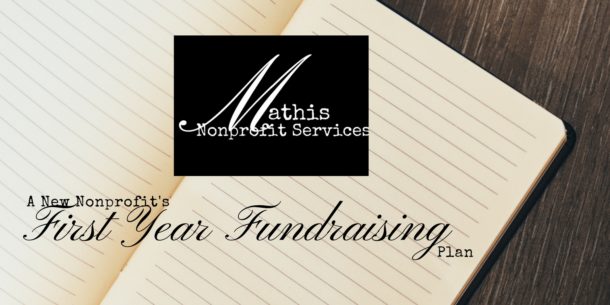Recently, the Chamber of Commerce in my area held an event cleverly called Get On Boards. It was designed to connect nonprofits with people in the community who wanted to volunteer or be recruited to a nonprofit’s board. I have said for a few months now that I was open to the right opportunity and so when I saw this event, I registered.
I was excited when I got there and saw about 20 local nonprofits. I began to work the room, listening to the nonprofits talk about the organization. I was practicing what I preach and only made my interest known when it was a non-profit I had a passion for. Almost all wanted volunteers and broached that subject with me first. When I said I was really looking for board opportunities, I was met with excitement. And after that initial excitement is what I want you to learn from. Here are my lessons based on the experience of that night and the weeks that followed.
Lesson number one: Have a process to recruit
Have a process to recruit in place – now, like, today. If you don’t know where to start, start here. I think many of the organizations I talked with really didn’t have a process in place or the person I talked with didn’t know the process. I was expecting to be told the next steps. I expected a conversation more like this: so and so will give you a call next week to get to know you and let you ask questions about us. If we both decide to proceed, then you’ll be given an application to send back to us. The next step is to sit in on a board meeting. After that, we will hold a vote. The process will probably take about two to three months.
There are a myriad number of ways this process can go. Maybe you sent a board packet or a letter or email. Something that showed the organization is interested in a new board member. I wanted to find out more about the organization. What was expected of board members? What is the time commitment? But none of that was addressed. A recruitment process will help you define what the next steps are and have a clear path to being a board member. If you don’t have a potential board member packet, check out the board recruitment packet here.
Lesson number two: Remove obstacles to the initial steps
If someone says they are interested in serving on your board, the ball is in your court – not theirs. I had several tell me, “that’s great! call our executive director. “ Or “fill out this application.” First, here’s my card for your Executive Director to call me. If he or she is interested, then they can get in touch with me. I told you I want to explore this opportunity. Why are you making me chase you? Second, I said I was interested. Interest doesn’t mean commitment. It means I want to see if this relationship can go past today. I want to know more about you. I may not be ready to say we are a fit. I really wanted to know the next steps, and asking me to fill out an application felt more like being asked to fill out a marriage certificate on the first date.
What barriers are you putting up for the initial meeting? How can you eliminate those barriers?
Lesson number three: Follow Up
Strike while the iron is hot. If I came to you and said I have $20,000 to donate, what would you do? If you are smart, you would say thank you and how would you like to give the generous gift? You would either make plans to take the check or stand there while they made it out. You wouldn’t make them jump through hoops or totally ignore them. Why is my offer to join your board any different? Being a Board member carries immense responsibilities. It is the Board member committing their time, talent, contacts, and personal finances to the organization. It is a legal responsibility and a moral one. Board members are valuable. A Board member that understands their role is even more valuable. Why shouldn’t you treat them that way? Instead, I walk away thinking you really don’t need board members.
Two weeks after the event, no nonprofit has emailed, called, or otherwise tried to contact me. I gave each one that I was interested in my card, wrote down on their sign up sheets, and did what they asked – except fill out the application. Nada. Nothing. Zilch. I was actually ready to sign up with the first organization who contacted me. But nothing.
Why is follow up so important? Well, it’s good customer / donor service to follow up within the first 24 to 48 hours, or a week at maximum. Why wouldn’t it be good board service to do the same? I may not wind up serving but I could be a donor. If someone has said that they are interested, and that means they are ready to go through the process, why not go ahead and get them started?
There you have three lessons to take with you when you create or update your recruitment process or board recruitment packet.
And now, I’m scratching my head wondering, how do you get on a non-profit board?
Stay tuned for next month when it’s all about Nonprofit Boards. There will be group coaching sessions where we talk about the responsibilities of boards and how to put together a recruitment packet. Watch this blog and social media in September for other tips and tricks for nonprofit boards. I’m opening up the Board Resource page early. Click here for access.


 Most nonprofit leaders lay awake at night trying to figure out how to fund their mission.
Hi! I'm Alesha.
I teach sustainable fundraising in a way that they can take action today so they can serve their clients.
I can help you move from just getting started funding your new nonprofit to gaining confidence in your fundraising and building relationships to knowing what works for your organization and looking at the infinite game when it comes to funding. I’ve worked with nonprofit Founders and written the book I HAVE MY 501(C)3! NOW WHAT?!? Your Blueprint to Starting Your Nonprofit Without Being the Sole Funder that lays the foundations for funding in a new nonprofit.
I’ve worked in Development (Fundraising) Departments in large organizations and I know the no cost, low-cost methods they use to bring in funding. I bring those sound strategies to the nonprofits I serve.
Most nonprofit leaders lay awake at night trying to figure out how to fund their mission.
Hi! I'm Alesha.
I teach sustainable fundraising in a way that they can take action today so they can serve their clients.
I can help you move from just getting started funding your new nonprofit to gaining confidence in your fundraising and building relationships to knowing what works for your organization and looking at the infinite game when it comes to funding. I’ve worked with nonprofit Founders and written the book I HAVE MY 501(C)3! NOW WHAT?!? Your Blueprint to Starting Your Nonprofit Without Being the Sole Funder that lays the foundations for funding in a new nonprofit.
I’ve worked in Development (Fundraising) Departments in large organizations and I know the no cost, low-cost methods they use to bring in funding. I bring those sound strategies to the nonprofits I serve.